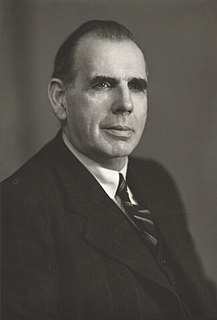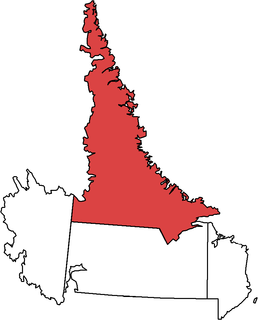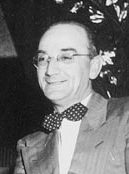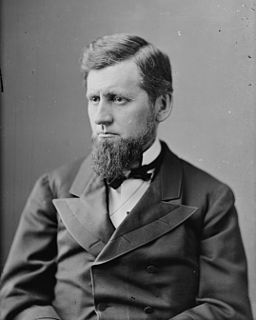
The 46th Newfoundland and Labrador general election was held on October 21, 2003, to elect the 48 members of the 45th General Assembly of Newfoundland and Labrador, the 17th general election for the province of Newfoundland and Labrador, Canada. The election was called on September 29 by Premier Roger Grimes of the Liberal Party of Newfoundland and Labrador.

Gordon Macdonald, 1st Baron Macdonald of Gwaenysgor was a British Labour Party politician and Newfoundland's final British governor as well as the last chairman of the Commission of Government serving from 1946 until the colony joined Confederation in 1949 and became a province of Canada.

Torngat Mountains is a provincial electoral district for the House of Assembly of Newfoundland and Labrador, Canada. As of 2011 there are 2,130 eligible voters living within the district.

The United States Senate elections of 1908 and 1909, some states elected their senators directly even before passage of the 17th Amendment in 1913. Oregon pioneered direct election and experimented with different measures over several years until it succeeded in 1907. Soon after, Nebraska followed suit and laid the foundation for other states to adopt measures reflecting the people's will. By 1912, as many as 29 states elected senators either as nominees of their party's primary or in conjunction with a general election. The Republicans lost two seats overall.

The 47th Newfoundland and Labrador general election was held on October 9, 2007 to elect members of the 46th General Assembly of Newfoundland and Labrador, the 18th general election for the province of Newfoundland and Labrador, Canada.

The 45th Newfoundland general election was held on February 9, 1999 to elect members of the 44th General Assembly of Newfoundland, the 16th general election for the province of Newfoundland and Labrador, Canada. It was won by the Liberal party.
William Joseph Browne, was a Canadian lawyer, judge and politician. He served in the Newfoundland House of Assembly and the House of Commons of Canada.
This article provides a timeline of elections in Canada, including all the provincial, territorial and federal elections. The information starts from when each province was formed or entered the Confederation, and continues through to the present day.

The 44th Newfoundland general election was held on February 22, 1996 to elect members of the 43rd General Assembly of Newfoundland, the 15th general election for the province of Newfoundland, Canada. It was won by the Liberal Party under new leader Brian Tobin. PC Leader Lynn Verge was not re-elected in her riding of Humber East.
The 36th Newfoundland general election was held on 28 October 1971 to elect members of the 35th General Assembly of Newfoundland, the seventh general election for the province of Newfoundland, Canada. It resulted in a hung parliament as, with the support of the Labrador Party's lone MHA, the Smallwood government had the support of 21 MHAs compared to 21 for the Progressive Conservative party. Smallwood ultimately resigned in January 1972 allowing Moores' Tories to form a government but the instability in the House led to the March 24, 1972 provincial election.
The 35th Newfoundland general election was held on 8 September 1966 to elect members of the 34th General Assembly of Newfoundland, the sixth general election for the province of Newfoundland, Canada. It was won by the Liberal party.
The 34th Newfoundland general election was held on 19 November 1962 to elect members of the 33rd General Assembly of Newfoundland, the fifth general election for the province of Newfoundland, Canada. It was won by the Liberal party.
The 33rd Newfoundland general election was held on 20 August 1959 to elect members of the 32nd General Assembly of Newfoundland, the fourth general election for the province of Newfoundland, Canada. It was won by the Liberal party.

The 32nd Newfoundland general election was held on 2 October 1956 to elect members of the 31st General Assembly of Newfoundland, the third general election for the province of Newfoundland, Canada. It was won by the Liberal party.

The 30th Newfoundland general election was held on 27 May 1949 to elect members of the 29th General Assembly of Newfoundland. It was the first general election held since Newfoundland joined Canadian confederation on 31 March 1949 and the first Newfoundland-wide election of any kind since the suspension of responsible government and the creation of the Commission of Government in 1934. The election was won by the Liberal Party.

The United States Senate elections of 1900 and 1901 were elections in which the Democratic Party gained two seats in the United States Senate, and which corresponded with President William McKinley's landslide re-election. By the beginning of the next Congress, however, the Republicans gained five additional seats, giving them a ten-seat majority.

The United States Senate elections of 1906 and 1907 were elections which had the Republican Party gain three seats in the United States Senate, expanding their majority to more twice that of the opposing Democratic Party.

The members of the 29th General Assembly of Newfoundland were elected in the Newfoundland general election held in June 1949. The general assembly sat from July 11, 1949 to November 3, 1951. This was the first general election held in Newfoundland since the assembly was replaced by an appointed Commission of Government in 1934. Newfoundland had joined Canadian confederation in March 1949.











